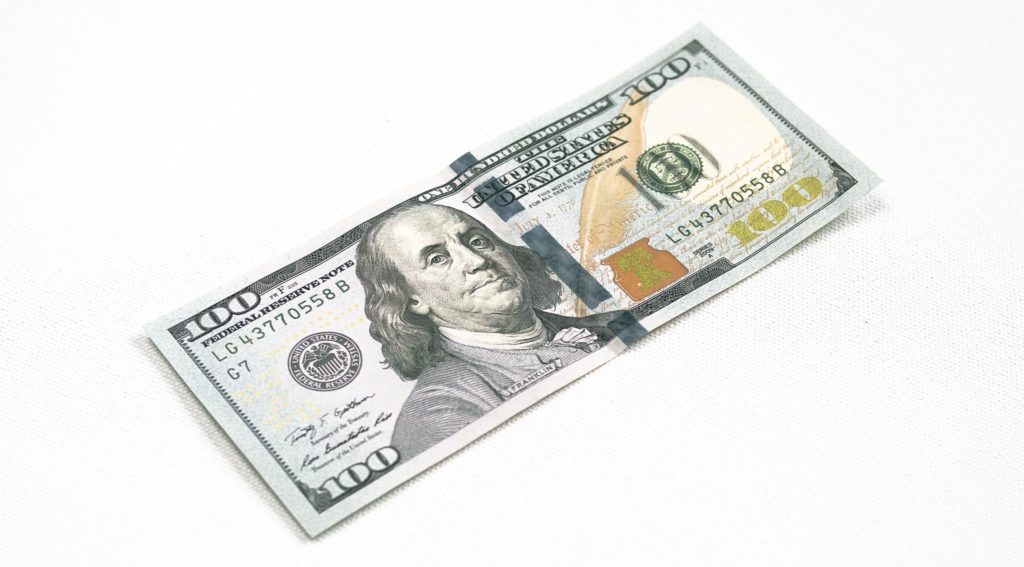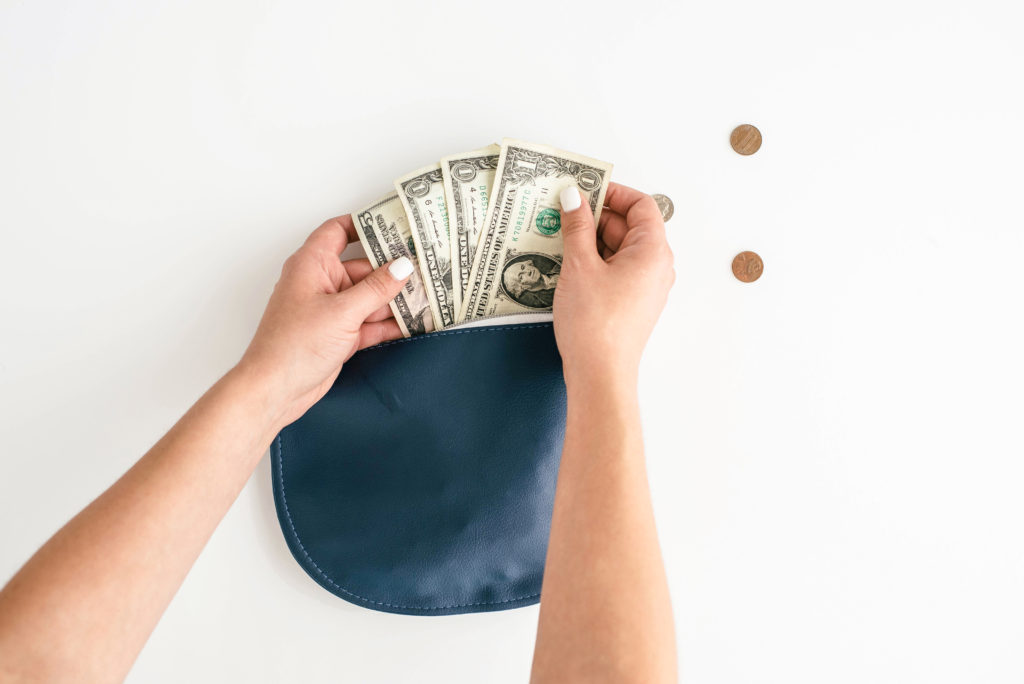Last Updated November 5, 2021
Put options are a great way to make money on the stock market. In this blog post, we will discuss how you can create a put option strategy that will generate income for your portfolio. The best part is how easy it is to do! So let me show you how to make money on put options.
But before we get started with talking about put options, you need to understand how trading stock options work in general.
What Is Stock Options Trading?
Stock options trading is a type of stock market investment strategy involving the purchase or sale of financial derivatives, such as put and call options. Put option traders profit from decreases in the price of their underlying stocks while call option traders profit when the share price increases.
The price you pay for the option is called the premium. Each options contract usually represents 100 shares of the underlying stock.
Stock options trading differ from long-term buy-and-hold strategies because they carry an expiration date. The longer your option is until expiration, the more time there is for prices in the market to move which means increased profit potential. Longer term expirations are usually more expensive though so keep that in mind.
What Are Put Options?
Put options give buyers the right (but not obligation) to sell shares in the stock market at an agreed upon price called the strike price, by a predetermined date.
How Do Put Options Work?
Now that you know what put options are, let me break down how put options work.
Buying A Put Option
When you buy a put option, you are speculating that the price of a stock will go down before your put option expires.

For example, assume you purchased 100 shares of XYZ Company for $100/share and you think the price is going to drop below $90/share. You could purchase a put option to sell the 100 shares at $90/share.
Assuming you were right and XYZ’s stocks dropped to $60/share, you can exercise your put option and sell your 100 shares for $90/share instead of the market price of $60/share. In this scenario, you provide yourself with protection from additional loss.
It’s important to note that you don’t have to own XYZ stock to buy a put option. So let’s say XYZ Company’s stock is currently trading at $100, but you don’t own any shares. You think the price is going to drop below $90/share, so you buy a put option to sell the 100 shares at $90/share.
Assuming you were right and XYZ’s stocks dropped to $60/share. You can buy 100 shares at the current market price of $60/share, and then exercise your put option and sell your 100 shares for $90/share.
In this scenario, you made a total profit of $3,000 ($30 profit x 100 shares = $3,000) minus the cost of the premium.
Selling A Put Option
In contrast, when you sell a put option, you have given someone else the right to require that you buy their shares at an agreed upon price by a predetermined date. The person who sells the put option is called the writer.
When you sell a put option, you are speculating that the price of a stock will go up before the put option expires.

For example, assume the current price of XYZ Company’s stock is $100/share, but you think the price is going to go up. So you sell a put option to buy 100 shares at $90/share with a premium of $5/share.
Assuming you were right and XYZ’s stocks went up to a higher price of $110, the puts will expire worthless (since the stock is worth more than the price you’re obligated to pay for it). In this scenario, you make $500 because you get to keep the premium ($5/share x 100 = $500). Remember, each contract represents 100 shares of stock.
When To Use Put Options?
In general, put options are a type of investment that allows investors to make money when the value of an asset goes down.
Therefore, put option strategies are used in bear markets when traders expect prices of the underlying assets to decline over time.
How To Make Money On Put Options
Now that we understand how put options work, let’s talk about how you can make money on put option contracts.
Some of the more popular strategies you can use to make money with put options are:
- Protective Put
- Naked Put
- Put Spread
Let’s talk about each put option trading strategy in more detail.
Put Option Trading Strategies

Strategy #One – Protective Put
The first strategy is called a protective put (also known as married puts) which involves purchasing the underlying stock along with purchasing an equal number of contracts for puts at the strike price. If the stock price declines below the strike price of your purchased puts then the put option provides protection below the strike price.
For example, assume you purchase 100 shares of XYZ Company for $100/share and the price drops to $60/share. You could then buy a put option with a strike price of $95 that expires in 30 days for about $0.50/share. This would guarantee you the right to sell your shares at $95/share instead of the lower market price of $60/share.
Protective puts are often used as an alternative to stop orders. A stop order is an order to buy or sell a stock once the price of the stock reaches a certain level. If the stock reaches the stop price, the order becomes a market order and is filled at the next available market price.
The problem with stop orders is they sometimes work when you don’t want them to work, and when you really need them they don’t work at all. For example, if a stock’s price is fluctuating but not really tanking, a stop order might get you out prematurely. If that happens, you probably won’t be too happy if the stock bounces back.
Or, if a major news event happens overnight and the stock drops significantly (thus, it opens lower than the previous trading day), you might not get out at your stop price. Instead, you’ll get out at the next available market price, which could be a much lower price.
If you buy a protective put, you have complete control over when you exercise your option, and the price you’re going to receive for your stock is predetermined. However, these benefits do come at a cost. A stop order is free, but you’ll have to pay to buy a put.

Buying a put to limit the risk of stock ownership has advantages and disadvantages. The advantage is that risk is limited during the life of the put. The disadvantage of buying a put is that the total cost of the stock is increased by the cost of the put.
So in the example above your 100 shares of XYZ Company will cost you $10,050 ($100 + $0.50 = $100.50 x 100 shares = $10,050) with the put option, instead of just $10,000 ($100 x 100 shares = $10,000).
Recommended Money Making Strategy
Ultimately, you want the stock to go to infinity and the puts to expire worthless. Many investors will buy a protective put when they’ve seen a nice increase of the stock price, and they want to protect their unrealized profits against a downturn.
It’s sometimes easier to part with the money to pay for the put when you’ve already seen decent gains on the stock. So it would be nice if the stock goes up at least enough to cover the premium paid for the put.
Your potential profit is theoretically unlimited, because you’ll still own the stock and and will make money as long as the price of the stock continues to go up. Worst-case scenario, your loss is the premium paid.
Strategy #Two – Naked Put
The second strategy is called a naked put. A naked put strategy is sometimes referred to as an uncovered put or a short put. A naked put is an options strategy in which the investor sells a put contract without having first established ownership in the underlying security. The seller of an uncovered put is known as a naked writer.
For example, assume XYZ Company’s stock is currently trading at $100/share. You think the price of the stock is going to rise. So you sell a put option with a strike price of $110 expiring in 30 days for $1/share. In return, you will receive the premium of $100 from that sale of the put contract.
So you will make $100 if XYZ Company were to stay above the strike price of $110 without ever owning the stock.

Recommended Money Making Strategy
You would use this strategy if you think a stock’s price will remain unchanged or will rise. Thus, you want the stock to go to infinity and the puts to expire worthless. That way you get to keep the premium you got from the sale of the put contract.
The risk involved with this strategy is that you could be forced to purchase shares at an extremely high price if they are trading just below your strike price when expiration comes around.
For example, if the price suddenly drops to $99/share, you are now required to purchase 100 shares of XYZ Company at an effective purchase price of $110 per share if the buyer of the put chooses to exercise their option. In other words, you’d be forced to buy 100 shares at $110, whereas the current market value is only $99/share.
Strategy #Three – Put Spread
The third strategy is called a put spread. A put spread is an options strategy in which the investor buys one put contract while simultaneously selling another at a higher strike price to reduce the cost of buying protection on their shares. When executing a spread, you are both a put buyer and a put seller.
There are two types of put spreads: bull put spreads and bear put spreads.
Bull Put Spreads
A bull put spread is an options strategy you could use if you expect the price of the underlying stock to increase. To use this strategy, you first buy a put option and pay a premium. Then you sell a put option (on the same security) with a higher strike price than the one you bought that expires in the same time frame. When you sell that put option, you will receive a premium for the sale.

You could make money from the premium received if the underlying stock price increases. If the underlying stock price decreases, you’d have limited your loss by purchasing a put contract to offset the put option you sold.
This sounds a little complicated, so let me break it down with an example…
- Assume XYZ Company is currently trading at $100/share.
- You buy a put option with a strike price of $85. In other words, you buy a put option that allows you to sell 100 shares of XYZ Company at $85 no matter how low the stock price goes. You paid a premium of $2.84/stock for this put option—so you spent a total of $284 (remeber each contract represents 100 shares of stock).
- You also sell a put option with a strike price of $90 that expires in the same time frame. In other words, if the put option holder excercises their option, you have to buy 100 shares of XYZ Company at $90 no matter how low the stock price goes. You collected a premium of $5.09/stock for this put option contract—so you collected a total of $509.
If the price goes up above $90, both options (the one you bought and the one you sold) expire worthless. Therefore, you have a max profit of $225 ($509 premium you collected – $284 premium you paid = $225).

Recommended Money Making Strategy
You would use this strategy if you think a stock’s price will remain unchanged or will rise, but you want to limit your loss just in case you’re wrong and the stock price goes down.
So in our example above you will make $225 if XYZ Company were to stay above the strike price. Since you paid a premium of $2.84/stock for the put option you bought, and got a premium of $5.09/stock for the put option you sold, you made a net credit of $2.25/stock ($5.09 – $2.84 = $2.25). Since each contract represents 100 shares of stock, your profit is $225 ($2.25 x 100 = $225).
Ultimately you want the stock to go up so the puts can expire worthless and you can keep the net credit.
On the other hand, if the price of the stock for XYZ Company in our example drops below $85, the most you can lose is $275.
You calculate your max loss potential by looking at the difference between the lowest price you can sell your shares of XYZ Company for (in this case the strike price of the option is $85) and what you have to buy XYZ Company shares for (in this case it’s $90). That leaves you with a spread width of $5 in this case.
Thus you can lose $500 ($5 spread width x 100 shares = $500)…but don’t forget the net credit of $225 you made from day 1 (remember you collected $5.09 and paid $2.84, leaving you with a net credit of $2.25/share x 100 shares). So the $500 loss plus the $225 credit means the most you can lose is $275.

To calculate your breakeven point, you subtract your net credit from the strike price of the put option you sold. In this case, your breakeven point is $87.75 price per share ($90 strick price – $2.25 credit = $87.75)
Now that I explained the concepts to you, here are the formulas to make it easier to calculate:
Maximum Profit Potential: $2.25 credit x 100 shares = $225
Maximum Loss Potential: ($5 spread width – $2.25 credit) x 100 shares = $275
Expiration Breakeven Price: $90 sold put strike price – $2.25 credit = $87.75
Bear Put Spreads
On the other hand, a bear put spread is an options strategy you could use if you expect the price of the underlying stock to decrease.
To use this strategy, you first buy a put contract with a higher strike price (you pay a premium) while simultaneously selling a put option at a slightly lower strike price (you will receive a premium for the sale). If the underlying stock increases, you would have limited your loss by selling a put option to make up for the put contract you bought.

Again, let’s break it down with an example…
- Assume XYZ Company is currently trading at $135/share.
- You buy a put option with a strike price of $130. In other words, you can sell 100 shares of XYZ Company at $130 no matter how low the stock price goes. You paid a premium of $5/stock for this put option—so you spent a total of $500 (remeber each contract represents 100 shares of stock).
- You also sell a put option with a strike price of $120 that expires in the same time frame. In other words, if the put option holder excercises their option, you have to buy 100 shares of XYZ Company at $120 no matter how low the stock price goes. You collected a premium of $2/stock for this put option contract—so you collected a total of $200.
If the price goes down like you hope the maximum you can make is $700.
You calculate your maximum profit potential by looking at the difference between the lowest price you can sell your shares of XYZ Company for (in this case the strike price of the option is $130) and what you have to buy XYZ Company shares for (in this case it’s $120). That leaves you with a spread width of $10 in this case.
So if the put option buyer (who purchased the put option from you) decides to exercise that option, you will always make at least $10/share. But don’t forget, you have to deduct $3/share which is what it cost you for both put contracts (remember you collected $2 and paid $5, leaving you with a net debit of $3/share). So the $1,000 gain ($10/share x 100 shares) minus the $300 cost ($3/share x 100 shares) means the most you can make is $700.
Recommended Money Making Strategy
This is a great strategy if you think a stock’s price will go down, but you want to limit your loss in what you paid for the option just in case you’re wrong and the stock price goes up. The downside to this, however, is it limits your profits if you were right.

In the example above with XYZ Company, the most you can make is $700 no matter how low the stock drops.
On the other hand, If the price goes up above $130, both options contracts (the one you bought and the one you sold) will expire worthless. Therefore, you will only lose $300 (because you paid $500 for your option premium and received $200 for the premium paid to you) versus $500.
To calculate your break-even point, you subtract your net debit from the strike price of the put option you bought. In this case, your breakeven point is $127 price per share ($130 strick price – $3 debit = $127)
Now that I explained the concepts to you, here are the formulas to make it easier to calculate:
Maximum Profit Potential: ($10 spread width – $3 debit) x 100 shares = $700
Maximum Loss Potential: $3 debit x 100 shares = $300
Expiration Breakeven Price: $130 purchased put strike price – $3 debit = $127
How To Get Started With Put Options?
If you’re just getting started investing with put options, you first need to follow these 3 steps.
Step 1: Control Your Emotions
When investing, the first thing you need is the correct mindset—meaning you need to control your emotions. Any trading strategy will not be profitable if your emotions get in the way. You need to be confident and have a plan for how you will create your investment strategy.

Step 2: Decide How Much You Want To Invest
Next, think about how much capital you have available to invest. You will want to make sure that the put options you are purchasing give you enough room for error and a buffer of safety in case your prediction doesn’t come true as quickly as expected.
You need enough money per option so that the premium is covered but not too much where the potential gain will be outweighed by commissions and fees.
Step 3: Determine Time Limit
Next, you need to decide how much time you want the option to be until expiration. Longer term options will cost more but they also have a better chance of paying off big in the end.
Step 4: Find A Brokerage
Lastly, you need to find a brokerage firm that is right for you. Ideally, you want to find a brokerage with little or no commissions and a good options trading platform. I recommend using a brokerage like Robinhood. I like Robinhood because it is 100% free to buy and sell options, and you can easily use it on your mobile phone.
It’s easy to open a brokerage account with Robbin and if you sign up today, you can get a free stock like Facebook or Apple. With Robinhood you also don’t need a minimum account balance, so you can get started right away. Keep in mind, Robinhood only allows you to exercise a put when you already own the underlying shares you’re selling.
Summary
There are many benefits of selling puts over buying the stock outright – it allows for more strategy than just holding a stock and waiting for it to be worth more later on, while also giving the option of limiting how much money can be lost.
There are three strategies you can use when investing with put options: protective puts, naked puts, and put spread. They all have their own benefits that might work better in certain situations than others so make sure you do you research and understand how to use them before making a final decision.
Related Articles:
- 5 Easy Ways to Make Money From Robinhood (Plus 3 More Advanced Tips)
- Acorns Vs. Robinhood: Which Is Best?
- Best Ways To Invest In The Stock Market For Beginners
If you want to remember this article, pin it to your favorite Pinterest board.




